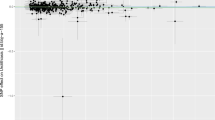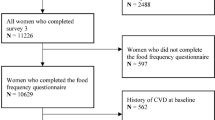Abstract
Background and aims: In previous studies, Pro12Ala polymorphism in peroxisome proliferator-activated receptors gamma 2 (PPAR-γ2) was shown to be associated with both longevity and metabolic syndrome, which was closely related with hyperuricemia. We examined long-lived subjects (≥90 years), to ascertain whether the polymorphism is associated with the level of serum uric acid (SUA). Methods: The present study analysed data from a survey conducted in 2005 on all residents aged 90 years or more in a district with 2,311,709 inhabitants. Results: The sample comprised 669 unrelated Chinese participants (aged 90–108 years, mean: 93.54±3.53 years; 67.2% women). The genotype frequencies of the Pro12Ala polymorphism were 0% Ala12Ala and 9.0% Pro12Ala, 91.0% Pro12Pro. Between men or women, and between subjects who were or were not 12Ala carriers, neither in SUA levels nor the prevalence of hyperuricemia were significant. Between subjects with and without hyperuricemia, the difference in prevalence of 12Ala carriers was also non-significant. Unadjusted and adjusted multiple logistic regressions showed that the odds ratios (OR) for hyperuricemia were not associated with Pro12Ala polymorphism in PPAR-γ2. Conclusions: In Chinese nonagenarians and centenarians, SUA levels are not associated with polymorphism in PPAR-γ2.
Similar content being viewed by others
References
Alberti KG, Zimmet P, Shaw J. Metabolic syndrome — a new world-wide definition. A consensus statement from the International Diabetes Federation. Diabet Med 2006; 23: 469–80.
Daskalopoulou SS, Athyros VG, Kolovou GD, Anagnostopoulou KK, Mikhailidis DP. Definitions of metabolic syndrome: where are we now? Curr Vasc Pharmacol 2006; 4: 185–97.
Pacifico L, Cantisani V, Anania C et al. Serum uric acid and its association with metabolic syndrome and carotid atherosclerosis in obese children. Eur J Endocrinol 2009; 160: 45–52.
Kawamoto R, Tomita H, Oka Y, Ohtsuka N. Relationship between serum uric acid concentration, metabolic syndrome and carotid atherosclerosis. Intern Med 2006; 45: 605–14.
Wannamethee SG. Serum uric acid and risk of coronary heart disease. Curr Pharm Des 2005; 11: 4125–32
Houseknecht KL, Cole BM, Steele PJ. Peroxisome proliferatoractivated receptor gamma (PPARgamma) and its ligands: a review. Domest Anim Endocrinol 2002; 22: 1–23.
Rocchi S, Auwerx J. Peroxisome proliferator-activated receptor-gamma: a versatile metabolic regulator. Ann Med 1999; 31: 342–51.
Walczak R, Tontonoz P. PPARadigms and PPARadoxes: expanding roles for PPARgamma in the control of lipid metabolism. J Lipid Res 2002; 43: 177–86.
Lehrke M, Lazar MA. The many faces of PPARgamma. Cell 2005; 123: 993–9.
Rocchi S, Auwerx J. Peroxisome proliferator-activated receptor-gamma: a versatile metabolic regulator. Ann Med 1999; 31: 342–51.
Celi FS, Shuldiner AR. The role of peroxisome proliferator-activated receptor gamma in diabetes and obesity. Curr Diab Rep 2002; 2: 179–85.
Ollero M, Junaidi O, Zaman MM et al. Decreased expression of peroxisome proliferator activated receptor gamma in cftr-/-mice. J Cell Physiol 2004; 200: 235–44.
Kallen CB, Lazar MA. Antidiabetic thiazolidinediones inhibit leptin (ob) gene expression in 3T3-L1 adipocytes. Proc Natl Acad Sci USA 1996, 93, 5793–6.
Zhang B, Graziano MP, Doebber TW, Leibowitz MD et al. Down-regulation of the expression of the obese gene by antidiabetic thiazolidinediones in Zucker diabetic fatty rats and db/db mice. J Biol Chem 1996; 271: 9455–9.
Stumvoll M, Haring H. The peroxisome proliferator-activated receptor-gamma2 Pro12Ala polymorphism. Diabetes 2002; 51: 2341–7.
Tonjes A, Stumvoll M. The role of the Pro12Ala polymorphism in peroxisome proliferator-activated receptor gamma in diabetes risk. Curr Opin Clin Nutr Metab Care 2007; 10: 410–4.
Alevizaki M, Mantzou E, Cimponeriu A, Saltiki K, Philippou G, Wiersinga W. The Pro 12 Ala PPAR gamma gene polymorphism: possible modifier of the activity and severity of thyroid-associated orbitopathy (TAO). Clin Endocrinol (Oxf) 2009; 70: 464–8.
Nelson TL, Fingerlin TE, Moss L, Barmada MM, Ferrell RE, Norris JM. The PPARgamma Pro12Ala polymorphism is not associated with body mass index or waist circumference among Hispanics from Colorado. Ann Nutr Metab 2007; 51: 252–7.
Yang LL, Hua Q, Liu RK, Yang Z. Association between two common polymorphisms of PPARgamma gene and metabolic syndrome families in a Chinese population. Arch Med Res 2009; 40: 89–96.
Argmann C, Dobrin R, Heikkinen S et al. PPARgamma2 is a key driver of longevity in the mouse. PLoS Genet 2009; 5: e1000752.
Erol A. The Functions of PPARs in aging and longevity. PPAR Res 2007; 2007: 39654.
Yue JR, Dong BR, Huang CQ, Lu ZC, Wu HM, Zhang YL. Pro12Ala polymorphism in PPAR-γ2 and dementia in Chinese nonagenarians/centenarians. AGE doi 10.1007/s11357-010-9132-1.
Huang CQ, Dong BR, Zhang YL, Wu HM, Liu QX, Flaherty JH. Cognitive impairment and hypertension among Chinese nonagenarians and centenarians. Hypertens Res 2009; 32: 554–8.
Huang CQ, Dong BR, Wu HM, Zhang YL. Association of Cognitive Impairment with Serum Lipid/Lipoprotein among Chinese Nonagenarians and Centenarians. Dementia Geriatr Cogn Disord 2009; 27: 111–6.
Huang CQ, Dong BR, Zhang YL, Wu HM. Association of cognitive impairment with Smoking, Alcohol consumption, Tea consumption and Exercise among Chinese Nonagenarians/Centenarians. Cogn Behav Neurol 2009; 22: 190–6.
Meirhaeghe A, Boreham CAG, Murray LJ et al. A possible role for the PPARG Pro12Ala polymorphism in preterm birth. Diabetes 2007; 56: 494–8.
Author information
Authors and Affiliations
Corresponding author
Rights and permissions
About this article
Cite this article
Zhou, Y., Huang, CQ., Lu, ZC. et al. Association of serum uric acid with Pro12Ala polymorphism in PPAR-γ2 among Chinese nonagenarians/centenarians. Aging Clin Exp Res 24, 139–144 (2012). https://doi.org/10.3275/8018
Received:
Accepted:
Published:
Issue Date:
DOI: https://doi.org/10.3275/8018




